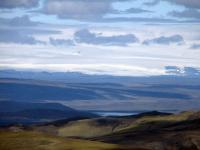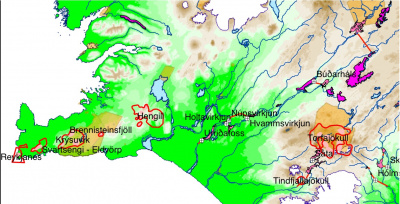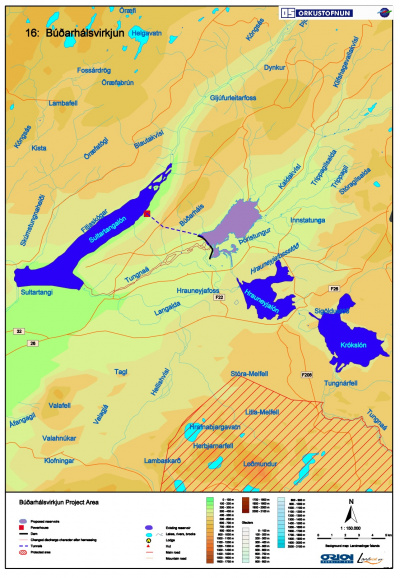Landsvirkjun, Iceland’s national power company, has announced it wants to restart construction on Búðarhálsvirjun which will dam Tungnaá and Köldukvísi rivers in South Iceland, this year. The company has just sent out tenders for machinery and electrical equipment while a tender for construction work would go out this autumn. Work on the dam and reservoir would start first, while the company waits for the legal processes for the three Þjórsá dams to be finished before it open tenders for the planned power plants of the Þjórsá and Búðarháls dams.
Landvirkjun says it is under pressure from a contract with Rio Tinto Alcan, to supply electricity for the Straumsvik smelter, expanding it’s production from 183.000 to ~ 223.000 metric tons per year, which requires an extra 75 MW of power (1). Búðarhálsvirkjun, would produce 80 MW, somewhat less than the original estimate of 100 MW (2). The remainder is to go to the Verne Holding data centre in Keflavik. The dam, projected to be 2400 m long and 24m high and would create the 8 km2 Sporðöldulón reservoir next to Hrauneyafoss. The cost is expected to be around 23.2 billion krona (192 million euro) (3).
From the reservoir there is an open channel as well as a tunnel through Búðarháls, to a powerhouse above ground at the existing Sultartangi Reservoir (west of the projected Sporðöldulón reservoir that would be created by Búðarhálsvirkjun.
 The work was stopped in 2002 when the dam was deemed economically unfeasible. The landscape has already been severely impacted by explosives and bulldozing.
The work was stopped in 2002 when the dam was deemed economically unfeasible. The landscape has already been severely impacted by explosives and bulldozing.
The other dams planned in the area are Hvammur (82 MW), Holt (53 MW) and Uridafoss (130 MW), on Þjórsá river. Landsvirkjun claims these are not meant for aluminium, but for other industries such as data centres and silicon refineries to be located in Thorlákshöfn.
However, it is impossible that Landsvirkjun will be able to find enough companies to establish themselves to fully utilise the the total of 265 MW that is remaining. The labour market is very tight in Iceland; even if Landsvirkjun would offer the cheapest energy in the world, the labour market would limit the amount of high-tech industries that can be established and it would be likely that the remaining energy would go to further aluminium expansion.
Click images to enlarge
References
- 1. Landsvirkjun (2008). Work on Búdarháls Power Plant resumed. http://www.landsvirkjun.com/EN/newsItem.asp?catID=74&ArtId=1287 [Accessed August 18th, 2008].
- 2. Hönnun hf. and Rafhönnun (1999). Búðarhálsvirkjun – Verkhönnun 100 MW virkunar. Landsvirkjun, Reykjavik.
- 3. Orkustofnun (2002). Hydro schemes in master plan for utilization of renewable energy resources in Iceland. http://os.is/Apps/WebObjects/Orkustofnun.woa/swdocument/1245/Master+Plan+-+Hydro+Power+Schemes.pdf [Accessed August 18th, 2008]. Prices corrected to July 2008 with Icelandic building cost index [source: Statistics Iceland].


